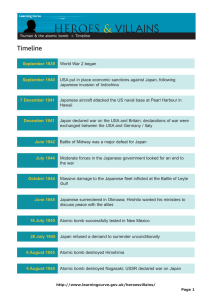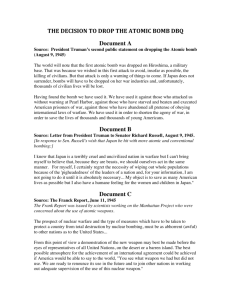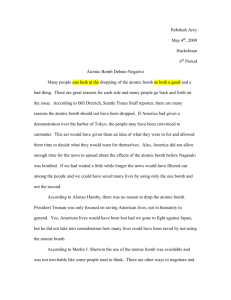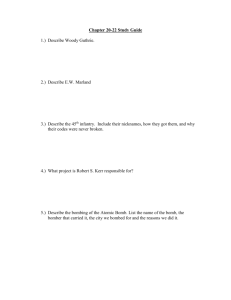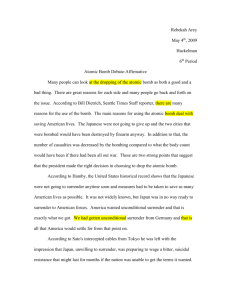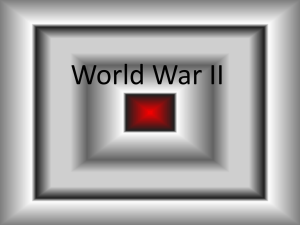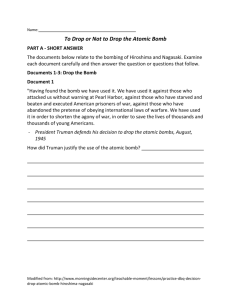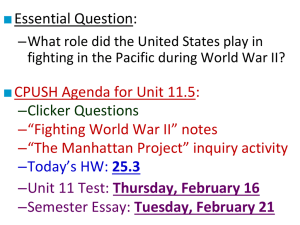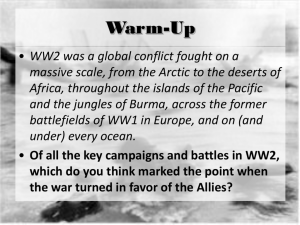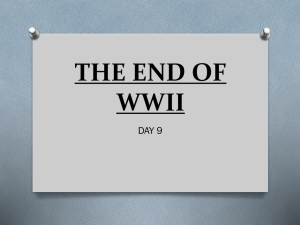3-11-11 APUSH page 756-764 KTs
advertisement
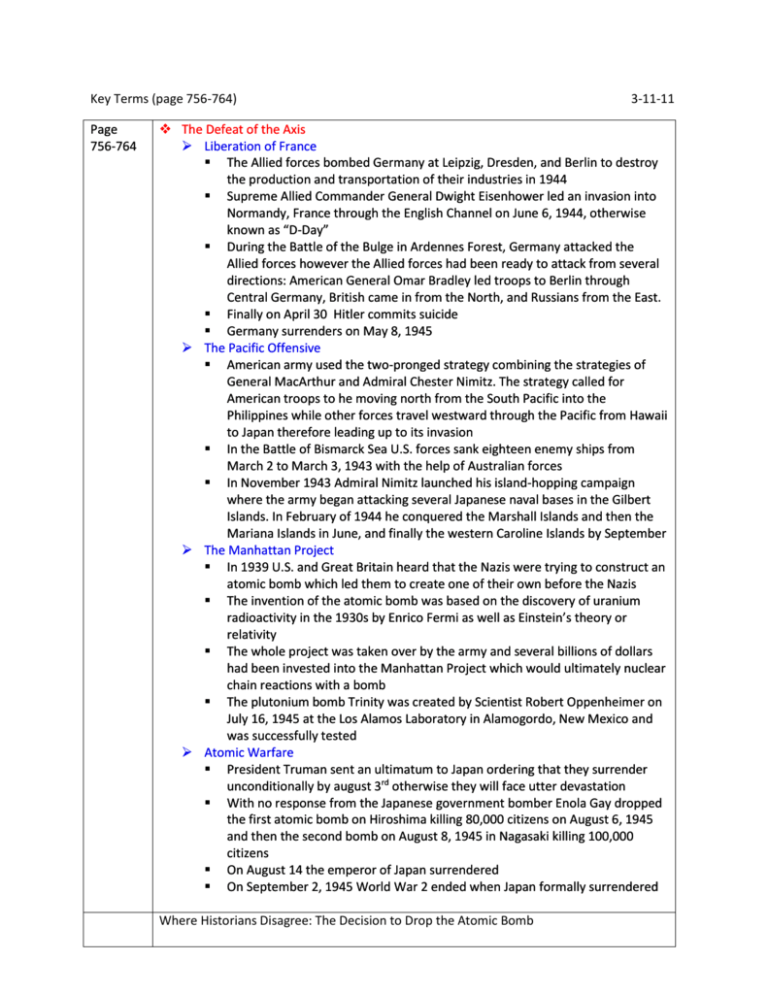
Key Terms (page 756-764) Page 756-764 3-11-11 The Defeat of the Axis Liberation of France The Allied forces bombed Germany at Leipzig, Dresden, and Berlin to destroy the production and transportation of their industries in 1944 Supreme Allied Commander General Dwight Eisenhower led an invasion into Normandy, France through the English Channel on June 6, 1944, otherwise known as “D-Day” During the Battle of the Bulge in Ardennes Forest, Germany attacked the Allied forces however the Allied forces had been ready to attack from several directions: American General Omar Bradley led troops to Berlin through Central Germany, British came in from the North, and Russians from the East. Finally on April 30 Hitler commits suicide Germany surrenders on May 8, 1945 The Pacific Offensive American army used the two-pronged strategy combining the strategies of General MacArthur and Admiral Chester Nimitz. The strategy called for American troops to he moving north from the South Pacific into the Philippines while other forces travel westward through the Pacific from Hawaii to Japan therefore leading up to its invasion In the Battle of Bismarck Sea U.S. forces sank eighteen enemy ships from March 2 to March 3, 1943 with the help of Australian forces In November 1943 Admiral Nimitz launched his island-hopping campaign where the army began attacking several Japanese naval bases in the Gilbert Islands. In February of 1944 he conquered the Marshall Islands and then the Mariana Islands in June, and finally the western Caroline Islands by September The Manhattan Project In 1939 U.S. and Great Britain heard that the Nazis were trying to construct an atomic bomb which led them to create one of their own before the Nazis The invention of the atomic bomb was based on the discovery of uranium radioactivity in the 1930s by Enrico Fermi as well as Einstein’s theory or relativity The whole project was taken over by the army and several billions of dollars had been invested into the Manhattan Project which would ultimately nuclear chain reactions with a bomb The plutonium bomb Trinity was created by Scientist Robert Oppenheimer on July 16, 1945 at the Los Alamos Laboratory in Alamogordo, New Mexico and was successfully tested Atomic Warfare President Truman sent an ultimatum to Japan ordering that they surrender unconditionally by august 3rd otherwise they will face utter devastation With no response from the Japanese government bomber Enola Gay dropped the first atomic bomb on Hiroshima killing 80,000 citizens on August 6, 1945 and then the second bomb on August 8, 1945 in Nagasaki killing 100,000 citizens On August 14 the emperor of Japan surrendered On September 2, 1945 World War 2 ended when Japan formally surrendered Where Historians Disagree: The Decision to Drop the Atomic Bomb It is recorded that Truman’s decision to drop the atomic bomb was because he knew the only other alternative would be to invade Japan by mainland which could lead to a million deaths. To avoid that he felt that using the atomic bomb as a military weapon was correct because he got America out of the war as quick as possible. Other people like the Secretary of War Henry Stimson and other historians like Herbert Feis agree with Truman and believe that he made his decision only based on which strategy would take America to victory quicker British physicist P.M. S. Blackett who wrote in Fear, War, and the Bomb in 1948 that the destruction of Hiroshima and Nagasaki was not just the military act of the second World War but the first major operation of the cold diplomatic war with Russia
